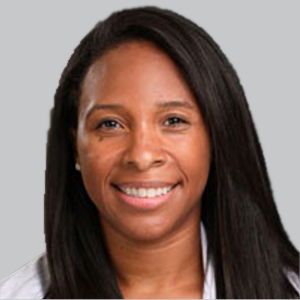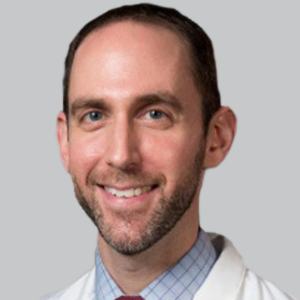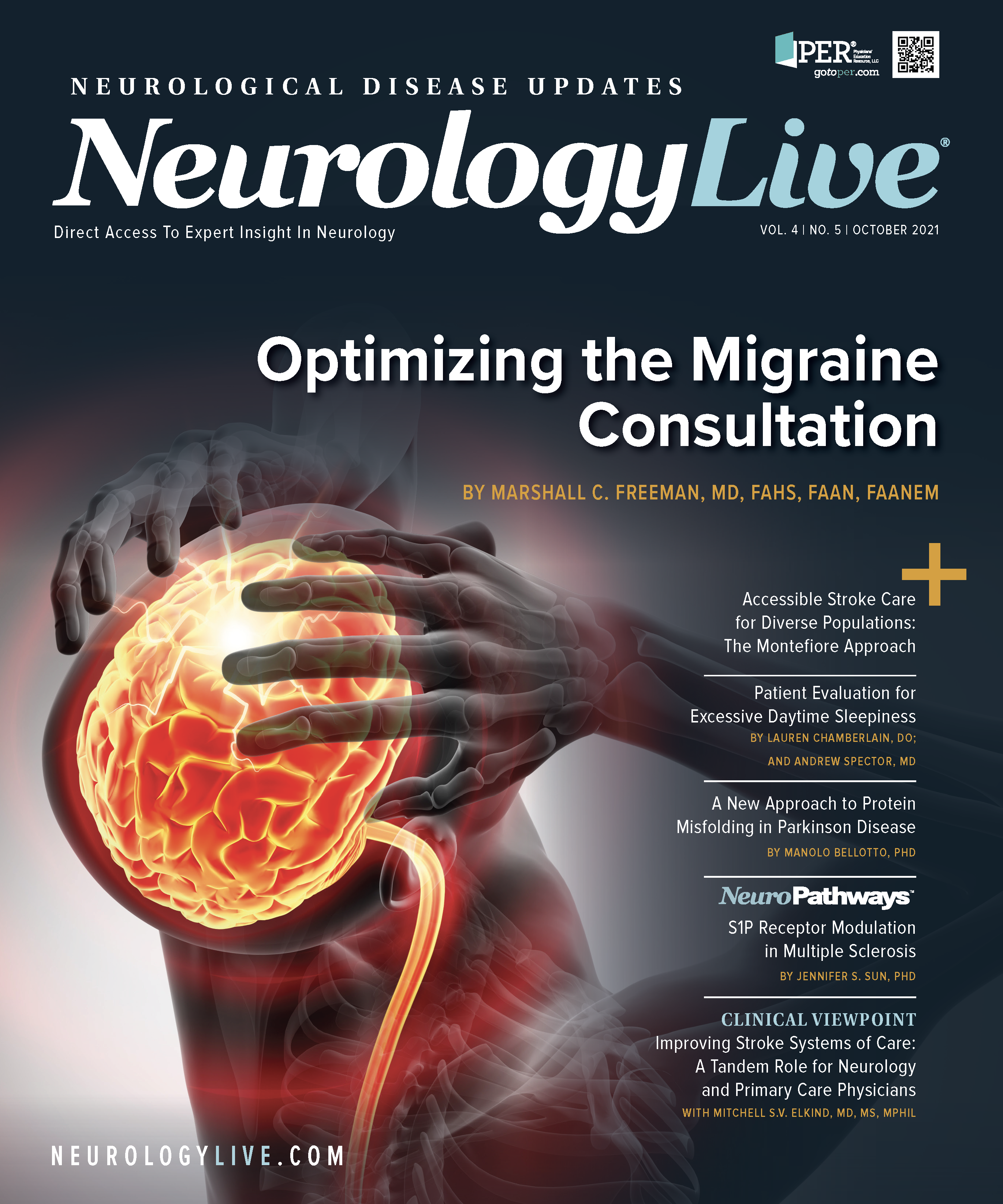Publication
Article
NeurologyLive
Patient Evaluation for Excessive Daytime Sleepiness
Author(s):
Excessive daytime sleepiness is a hallmark of a number of sleep disorders, and ensuring the proper diagnosis and management of those presenting with it is crucial to care.
Lauren Chamberlain, DO

EXCESSIVE DAYTIME SLEEPINESS (EDS), demonstrated by episodes of daytime sleep or an uncontrollable need to sleep, is highly prevalent, with recent articles showing it affects about 20% of the world population.1,2 Clinicians in all fields, and frequently neurologists, will encounter patients with EDS. The differential diagnosis for EDS can be organized into primary and secondary causes.
The International Classification of Sleep Disorders-Third Edition includes primary and secondary causes of EDS, referred to as hypersomnias, under the Central Disorders of Hypersomnolence category.3 Secondary causes are more varied and more common than primary causes and must be excluded before a diagnosis of a primary hypersomnia can be made. This article will review the secondary causes of EDS to help providers determine when an evaluation for primary causes of EDS is warranted. This is followed by a discussion of the primary hypersomnias, addressing both diagnostic and treatment paradigms for the central disorders of hypersomnolence.
Secondary Hypersomnias
Insufficient Sleep Syndrome
An estimated 27% of Americans sleep fewer than 8 hours per night, and 18% sleep fewer than 6 hours per night, leading to a large sleep-deprived population.4 Although individuals sleeping 6 to 7 hours per night are likely to exhibit some degree of daytime sleepiness, 6 hours of sleep per night is the generally accepted minimum below which a primary hypersomnia would not be diagnosable because of the presence of marked sleep deprivation.5
In addition to short sleep, poor-quality sleep related to various factors, such as a sleep environment that is not restful, chronic pain, and shift work, can contribute to EDS and should be treated prior to pursuing a diagnosis of a central disorder of hypersomnolence. Evaluation methods for insufficient sleep include a comprehensive sleep history, sleep diaries, and, if necessary, actigraphy.
Hypersomnia From a Medication or Substance
Medications and substances can cause sleepiness directly and indirectly. Patients with insomnia who are prescribed long-acting soporific medications, such as trazodone and clonazepam, can present with iatrogenic EDS. This should not be confused for endogenous sleepiness, as the presenting complaint is difficulty sleeping. Although narcolepsy, the most common primary hypersomnia, is well known to be associated with disrupted nighttime sleep,6 severe sleep initiation insomnia requiring pharmacotherapy to induce sleep is less likely to be a feature of narcolepsy, and the sleepiness must predate the initiation of hypnotic medications for a primary hypersomnia to be considered.
Andrew Spector, MD

A comprehensive review of all sedating medications is beyond the scope of this article, but drugs from many classes of medication should be considered as potential causes of EDS, including benzodiazepines and barbiturates, first-generation antihistamines, antipsychotics, antiemetics, antidepressants, dopamine agonists, and some antihypertensives. Opiates, by contrast, are most sedating with short-term use, and patients who use chronic, prescription opiates may experience less sleepiness, although some (eg, methadone) can be persistently sedating.7 Substances such as alcohol, cannabis, and herbal supplements should also be screened as part of an evaluation of EDS. Stimulant withdrawal is a cause of acute EDS but is not expected to cause chronic EDS. Sedating drugs should be reduced and eliminated when possible prior to pursuing a diagnosis of a primary hypersomnia.
Hypersomnia Due to a Medical Disorder/Associated With a Psychiatric Disorder
Several medical conditions involving the cardiovascular respiratory, hematologic, and neurologic systems can cause excessive sleepiness, such as coronary artery disease, obstructive sleep apnea, and sickle cell anemia, as well as psychiatric diseases.8-10
Frequently, the medical conditions that lead to EDS are chronic diseases that affect vital organ function or cause pain, leading to poor sleep and, in turn, EDS. If any of these disorders is suspected, the treatment for the sleepiness is management of the underlying condition. Stimulants can be offered if deemed safe and necessary once the patient is medically optimized.
Other Sleep Disorders
EDS is a common symptom in most sleep disorders.11 As part of any evaluation for EDS, a comprehensive sleep history should be performed to screen for sleep-related breathing disorders (eg, obstructive or central sleep apnea), circadian rhythm sleep-wake disorders (eg, delayed sleep-wake phase disorder), and sleep-related movement disorders (eg, periodic limb movement disorder). Other sleep disorders must be adequately treated before an evaluation for a primary hypersomnia can occur.
Primary Hypersomnias
Narcolepsy
Narcolepsy is divided into type 1 and type 2, which is equivalent to with and without cataplexy, respectively.3 Cataplexy is the sudden and brief loss of muscle tone in response to an emotional trigger, most commonly laughter. Although narcolepsy is associated with 4 classic symptoms other than cataplexy, the only one required for diagnosis is EDS. The other symptoms that are present in varying frequencies are hypnagogic and hypnopompic hallucinations, sleep paralysis, and disrupted nighttime sleep. One conceptualization of narcolepsy is a disease of unstable REM sleep with REM imagery and REM paralysis bleeding over into wakefulness.
Narcolepsy type 1 is caused by orexin deficiency.11 The orexin system involves 2 small neuropeptides (orexin A and orexin B) that are responsible for exciting target neurons throughout the cortex.11 The absence of orexin disrupts frontal and limbic-diencephalic systems, and the brainstem. Narcolepsy type 1 is thought to be an autoimmune process triggered by genetics and environmental factors.11 There is a known association with human leukocyte antigen (HLA)-DQB1*0602. The etiology of narcolepsy type 2 is less clear, as low orexin and HLA typing are not as strongly associated with type 2 as they are with type 1.
Idiopathic Hypersomnia
Frequently misconceived as a “wastebasket diagnosis” or a diagnosis of exclusion because of its nomenclature, idiopathic hypersomnia (IH) is a specifically defined and severely debilitating condition.12 The hallmark symptom of IH is profound, unquenchable sleepiness, often leading to patients sleeping more than 10 hours—and sometimes much more than 10 hours—per day.12 Furthermore, patients often identify severe difficulty awakening from sleep with extreme sleep inertia, also known as sleep drunkenness. Sleep inertia is the sensation of mental fogginess and desire to return to sleep that occurs upon attempting to awaken. Patients with IH tend to get no relief from naps, whereas patients with narcolepsy tend to feel better after even brief naps. Although sleep-related hallucinations and sleep paralysis can occur in IH, these are not considered classic symptoms. The presence of cataplexy would rule out IH, as it is seen only in narcolepsy.
Kleine-Levin Syndrome
An extremely rare condition marked by recurrent periods of profound hypersomnolence alternating with normal sleep-wake behavior is Kleine-Levin syndrome.3 Episodes of hypersomnolence last up to 5 weeks and then remit, recurring at least twice per year. During the attacks, patients exhibit at least 1 of the following symptoms: cognitive dysfunction, altered perception, eating disorders, and disinhibition. The natural history of the condition is progressive resolution of symptoms over a median of 14 years.
Diagnostic Tests
After ruling out inadequate sleep, medications and substance use, and medical conditions that cause EDS, it is necessary to perform polysomnography to rule out other sleep disorders before making a diagnosis of a primary hypersomnia. Polysomnography will determine the patient’s apnea-hypopnea index (normal, < 5/hour). It will also evaluate for periodic limb movements of sleep (normal, < 15/hour).
If either of these is abnormal, treatment for sleep apnea and periodic limb movement disorder can be attempted prior to further evaluation for a central disorder of hypersomnolence. If the sleep history does not suggest sleep apnea or excessive limb movements as the cause of the sleepiness, the polysomnogram should be ordered in conjunction with a multiple sleep latency test (MSLT). The polysomnogram will be performed first, followed by the MSLT if the polysomnogram reveals no significant abnormalities. Sleep laboratories have protocols that determine whether an MSLT will be performed following a polysomnogram. Therefore, the referring provider can order both tests together prior to ruling out sleep apnea because the MSLT will be canceled if another sleep disorder is detected. If no other sleep disorder is detected, though, an MSLT will provide valuable diagnostic information about the central disorders of hypersomnolence.
MSLT includes 5 nap opportunities wherein the patient attempts to fall asleep within 20 minutes. If sleep occurs, it can continue for 15 minutes before being interrupted by the technologist. The 2 principal measurements are sleep latency (eg, how long it took to fall asleep) in each nap, which is averaged to determine the mean sleep latency, and the presence of stage REM sleep, referred to as a sleeponset REM period (SOREMP). The population-based normal mean sleep latency is greater than 10 minutes.13,14
Pathological sleepiness is identified by mean sleep latencies less than 8 minutes (8- to 10-minute sleep latencies are borderline abnormal and should be interpreted in the clinical context). In cases of pathological sleepiness, the presence of 2 or more SOREMPs is consistent with narcolepsy, whereas 0 to 1 SOREMP is labeled IH. Studies have shown that the presence of 2 or more SOREMPs with a mean latency of less than 5 minutes had a 97% specificity for the diagnosis of narcolepsy.15 Unfortunately, the test-retest reliability of MSLT is disturbingly low, and a change in diagnosis from one MSLT to the next occurred in 53% of patients in 1 cohort with EDS.15
It is also possible to diagnose narcolepsy by testing orexin levels in the cerebrospinal fluid (CSF). A low CSF orexin A level, defined as less than 110 pg/mL, replaces the MSLT as a diagnostic criterion for narcolepsy.5,14 However, it is typically unnecessary to perform CSF testing, as the presence of cataplexy and a positive MSLT are sufficient for the diagnosis. Moreover, narcolepsy without cataplexy is not regularly associated with low CSF orexin, so CSF testing would not be valuable for this population.16
Treatment
The treatment of primary hypersomnias is symptomatic. There are no disease-modifying therapies available.17-19 The traditional stimulants (eg, methylphenidate, amphetamines) and wakefulness promoters (eg, modafinil, armodafinil, solriamfetol) increase dopamine and norepinephrine, whereas the novel drug pitolisant is an inverse agonist at the H3 histamine receptor. Sodium oxybate, and combination calcium, magnesium, potassium, and sodium oxybates also function to improve wakefulness but do so by enhancing sleep as opposed to directly augmenting arousal pathways. Of these, only calcium, magnesium, potassium, and sodium oxybates (Xywav; Jazz) is labeled for IH, whereas the wakefulness promoters, pitolisant, and both oxybate medications are approved for narcolepsy. Additional treatments for cataplexy are also available.
FIGURE. Algorithm for Evaluating Patients With Excessive Daytime Sleepiness. (click to enlarge)

Effective treatment of primary hypersomnias includes navigating the adverse effects of these medications. Traditional stimulants are associated with increases in heart rate and blood pressure level, anorexia, insomnia, and anxiety. Wakefulness promoters may cause headaches, psychiatric disturbances, and Stevens-Johnson syndrome. Adverse effects of pitolisant include insomnia, headaches, and nausea. Oxybate medications, although highly effective, can be difficult for many patients to tolerate because of depression, anxiety, psychosis, and nausea. They also can cause respiratory depression, so they cannot be used with other respiratory-suppressing medications.
Nonpharmacological treatment for primary hypersomnias, particularly narcolepsy, includes planned daytime naps, low-carbohydrate diets, and strict sleep hygiene. IH tends not to respond as well to nonpharmacological interventions.
Emerging data support the use of nontraditional medications, such as clarithromycin and flumazenil for IH.16 Several drugs remain in development, including extended-release oxybate, orexin replacement and orexin receptor agonists, reboxetine (a selective norepinephrine reuptake inhibitor), and a combination pill with modafinil and flecainide, an astroglial connexin inhibitor.19
Summary
Patients presenting with EDS can be conceptualized as having either a primary or secondary hypersomnia. Secondary causes, such as insufficient sleep, medical or psychiatric disorders, and medications and substances, should be evaluated and treated first. If EDS persists following optimization of each of these, a primary hypersomnia should be considered. Polysomnography with MSLT is the test of choice for evaluating primary hypersomnias, although MSLT is notoriously unreliable.
The algorithm in the FIGURE should be helpful with this initial evaluation of a patient with EDS. After a clinical diagnosis of a primary hypersomnia is made, many pharmacological and nonpharmacological treatments can provide patients with a markedly improved quality of life.
REFERENCES
1. Bassetti CLA, Adamantidis A, Burdakov D, et al. Narcolepsy – clinical spectrum, aetiopathophysiology, diagnosis and treatment. Nat Rev Neurol. 2019;15(9):519-539. doi:10.1038/s41582-019-0226-9
2. Takenoshita S, Nishino S. Pharmacologic management of excessive daytime sleepiness. Sleep Med Clin. 2020;15(2):177-194. doi:10.1016/j.jsmc.2020.02.006
3. Sateia MJ. International Classification of Sleep Disorders-Third Edition: highlights and modifications. Chest. 2014;146(5):1387-1394. doi:10.1378/chest.14-0970
4. Hafner M, Stepanek M, Taylor J, Troxel WM, van Stolk C. Why sleep matters – the economic costs of insufficient sleep: a cross-country comparative analysis. Rand Health Q. 2017;6(4):11. doi:10.7249/RR1791
5. Bradshaw DA, Yanagi MA, Pak ES, Peery TS, Ruff GA. Nightly sleep duration in the 2-week period preceding multiple sleep latency testing. J Clin Sleep Med. 2007;3(6):613-9. https://www.ncbi.nlm.nih.gov/pmc/articles/PMC2045722/. Accessed September 15, 2021
6. Roth T, Dauvilliers Y, Mignot E, et al. Disrupted nighttime sleep in narcolepsy. J Clin Sleep Med. 2013;9(9):955-965. doi:10.5664/jcsm.3004
7. Wang D, Teichtahl H, Goodman C, Drummer O, Grunstein RR, Kronborg I. Subjective daytime sleepiness and daytime function in patients on stable methadone maintenance treatment: possible mechanisms. J Clin Sleep Med. 2008;4(6):557-62. https://www.ncbi.nlm.nih.gov/pmc/articles/PMC2603533/. Accessed September 15, 2021.
8. Lee CH, Ng WY, Hau W, et al. Excessive daytime sleepiness is associated with longer culprit lesion and adverse outcomes in patients with coronary artery disease. J Clin Sleep Med. 2013;9(12):1267-1272. doi:10.5664/jcsm.3266
9. Javaheri S, Javaheri S. Update on persistent excessive daytime sleepiness in OSA. Chest. 2020;158(2):776-786. doi:10.1016/j.chest.2020.02.036
10. Sharma S, Efird JT, Knupp C, et al. Sleep disorders in adult sickle cell patients. J Clin Sleep Med. 2015;11(3):219. doi:10.5664/jcsm.4530
11. Trotti LM. Central disorders of hypersomnolence. Continuum (Minneap Minn). 2020;26(4):890-907. doi:10.1212/CON.0000000000000883
12. Billiard M, Sonka K. Idiopathic hypersomnia. Sleep Med Rev. 2016;29:23-33. doi:10.1016/j.smrv.2015.08.007
13. Littner MR, Kushida C, Wise M, et al. Practice parameters for clinical use of the multiple sleep latency test and the maintenance of wakefulness test. Sleep. 2005;28(1):113-121. doi:10.1093/sleep/28.1.113
14. Trotti LM, Staab BA, Rye DB. Test-retest reliability of the multiple sleep latency test in narcolepsy without cataplexy and idiopathic hypersomnia. J Clin Sleep Med. 2013;9(8):789-795. doi:10.5664/jcsm.2922
15. Aldrich MS, Chervin RD, Malow BA. Value of the multiple sleep latency test (MSLT) for the diagnosis of narcolepsy. Sleep. 1997;20(8):620-9. https://pubmed.ncbi.nlm.nih.gov/9351129/. Accessed September 15, 2021.
16. Dauvilliers Y, Baumann CR, Carlander B, et al. CSF hypocretin-1 levels in narcolepsy, Kleine-Levin syndrome, and other hypersomnias and neurological conditions. J Neurol Neurosurg Psychiatry. 2003;74(12):1667-73. doi:10.1136/jnnp.74.12.1667
17. Arnulf I, Leu-Semenescu S, Dodet P. Precision medicine for idiopathic hypersomnia. Sleep Med Clin. 2019;14(3):333-350. doi:10.1016/j.jsmc.2019.05.007
18. Scammell TE. Narcolepsy. N Engl J Med. 2015;373(27):2654-2662. doi:10.1056/NEJMra1500587
19. Thorpy MJ. Recently approved and upcoming treatments for narcolepsy. CNS Drugs. 2020;34(1):9-27. doi:10.1007/s40263-019-00689-1





